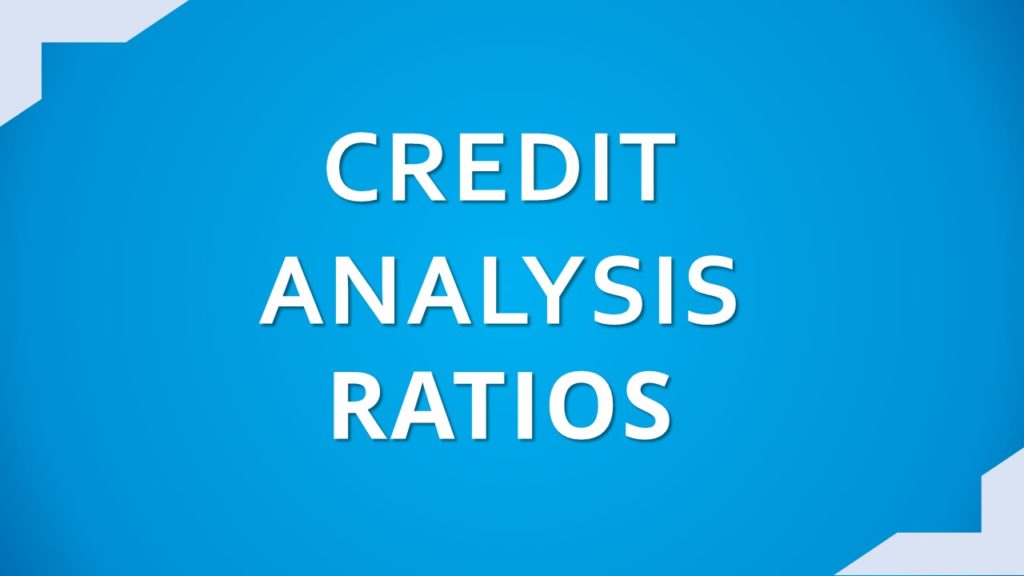What is accountant?
An accountant is a person who records business transactions on behalf of an organization, reports on company performance to management, and issues financial statements. A Qualified person who is trained in bookkeeping and in preparation, auditing and analysis of accounts. Accountants prepare annual reports and financial statements for planning and decision making, and advice on tax laws and investment opportunities. Here are several examples of the types of transactions in which an accountant may become involved:
- Issuing an invoice to a customer, which involves recording a sale and account receivable.
- Receiving an invoice from a supplier, which involves recording an expense or asset and an account payable.
- Issuing a salary or wage payment to an employee, which involves recording an expense and the outflow of cash.
- Reconciling a bank statement, which likely produces adjustments to the cash account.
Also known as:
- Incorporated Financial Accountant
- Chartered Public Finance Accountant
- Certified Public Practising Accountant
- Public Accountant
- Certified Practising Accountant
- Certified Management Accountant
- Chartered Professional Accountant
- International Accountant
- Chartered Management Accountant
- Certified Public Accountant
- Chartered Certified Accountant
- Chartered Accountant.
What Do Accountants Do?
Accountants take care of the daily financial transactions for a company or business. Their duties can cover various tasks that range from incoming earnings to outgoing payments. They may be in charge of figuring payrolls and tax deductions, paying vendors, implementing cash, check and electronic payments, preparing tax returns and reconciling the books at year end. An accountant’s duties may also vary depending on what type of accountant they are.
Can you explain Real account and Nominal account with examples?
Real Account: Real Account is an account of assets and Liabilities. It is a general ledger account that does not close at the end of the accounting year. In other words, the balances in the real accounts are carried over to become the beginning balances of the next accounting period.
Types of Real account:
- Land Account
- Machinery Account
- Building Account
- Goodwill Account
- Furniture Account
- Patents & Trade Marks Account.
Nominal Account: Nominal Account is an account of incomes or expenses. Nominal accounts in accounting are the temporary accounts, such as the income statement accounts. In other words, nominal accounts are the accounts that report revenues, expenses, gains, and losses.
Types of Nominal account
- Salary Account
- Wages Account
- Commission Paid/Received Account
- Telephone Expenses Account
- Printing & Stationery Account
- Interest Paid/Received Account.
What is the difference between real account and nominal accounts?
- The balance in a real account is not closed at the end of the accounting year. Instead, a real account begins each accounting year with its balance from the end of the previous year. Because the end-of-the-year balance is carried forward to the next accounting year, a real account is also known as a permanent account.
- The real accounts are the balance sheet accounts such as the accounts for recording assets, liabilities, and the owner’s (or stockholders’) equity. However, the sole proprietor’s drawing account, which is reported on the balance sheet during the year, is a temporary account because it is closed directly to the owner’s capital account at the end of the year.
- The nominal accounts are almost always the income statement accounts such as the accounts for recording revenues, expenses, gains, and losses. When the income statement accounts are closed at the end of the accounting year (perhaps through an income summary account) the net amount will ultimately end up in a balance sheet equity account such as the proprietor’s capital account or the corporation’s retained earnings account.
- The balance in a nominal account is closed at the end of the accounting year. As a result, a nominal account begins each accounting year with a zero balance. Since the balance does not carry forward to the next accounting year, a nominal account is also referred to as a temporary account. (Accounting coach)
Can you explain Personal Accounts?
Personal accounts are related to individuals, firms, companies, etc. A few examples of personal accounts include debtors, creditors, banks, outstanding/prepaid accounts, accounts of credit customers, accounts of goods suppliers, capital, drawings, etc.
Natural personal accounts: It is the simplest to understand out of all and includes all God’s creations who have the ability to deal, who, in most cases, are people. E.g. jack’s A/C, Allen’s A/C, etc.
Artificial personal accounts: Personal accounts which are created artificially by law, such as corporate bodies and institutions, are called artificial personal accounts. E.g. Pvt Ltd companies, LLPs, LLCs, clubs, schools, etc.
Representative personal accounts: Accounts which represent a certain person or a group directly or indirectly. E.g.: that wages are paid in advance to an employee a wage prepaid account will be opened in the books of accounts. These wages prepaid account is a representative personal account indirectly linked to the person.
Can you name different branches of accounting?
There are three branches of accounting named as “Financial Accounting”, “Management Accounting” and “Cost Accounting”.
Can you explain bookkeeping?
Bookkeeping involves the recording of financial transactions and other information related to the business on a day-to-day basis. The most important aspect of bookkeeping is to keep an accurate account of all records and keep them up to date. Accuracy is the most vital part of the bookkeeping process.
Most common examples of records are:
- Receipts from customers
- Payments to suppliers
- Billing for products supplied
- Recording invoices from suppliers
- Recording depreciation and other adjustments etc.
Can you define is the bookkeeping equation?
The bookkeeping equation for a sole proprietorship is assets = liabilities + owner’s equity. The bookkeeping equation for a corporation is assets = liabilities + stockholders’ equity. The bookkeeping equation is also referred to as the accounting equation.
Can you define double entry Bookkeeping?
Double entry bookkeeping follows the principle according to which every debit has a corresponding credit; hence total of all debits is always equal to the total of all credits. In this system, one account is debited and at the same time another account is credited by the similar amount.
Can you define Accounting?
Accounting is the systematic and comprehensive recording of financial transactions pertaining to a business, and it also refers to the process of summarizing, analyzing and reporting these transactions to oversight agencies and tax collection entities. Accounting is one of the key functions for almost any business; it may be handled by a bookkeeper and accountant at small firms or by sizable finance departments with dozens of employee’s at large companies.
Can you define Executive accounting?
It is a type of accounting that is specifically designed for the business that offers services to users.
Can you define Public accounting?
Public accounting offers audits and CPAs to review company financial records to ensure accountability. It is for general public.
Can you define Partitioning in accounting?
It is a kind of groups made on the basis of same responses by a system.
Can you define Offset accounting?
Offset accounting is one that decreases the net amount of another account to create a net balance
Can you define temporary account?
A temporary account is a general ledger account that begins each accounting year with a zero balance. At the end of the accounting year any balance in the account will be transferred to another account. This is referred to as closing the account.
Can you define outside accountant?
A company’s outside accountant is an accountant who is not an employee of the company. An outside accountant could be a sole practitioner or a member of a firm that provides accounting services to many companies.
Can you define deferred asset?
A deferred asset represents costs that have occurred, but because of certain circumstances the costs can be reported as expenses at a later time. One of these circumstances is the assurance from an electric utility’s regulators that the costs being deferred will be recoverable through increases in future utility rates.
Can you define asset account?
In accounting and bookkeeping an asset account is a general ledger record for sorting and storing the debit and credit amounts from a company’s transactions. The balance in an asset account will be part of the amounts reported on a company’s balance sheet.
Can you define Master Account?
A Master Account has subsidiary accounts. A master account receivable could be anything, it could be account receivable for various individual receivable accounts.
Can you define Bank Reconciliation?
A bank reconciliation is a process done by a company to ensure that the company’s records (check register, balance sheet, general ledger account, etc.) are correct and that the bank’s records are also correct.
Can you define accrual accounting?
Accrual Accounting is a method for measuring the performance and position of the company by identifying economic events regardless of when cash transaction happened. In this method, revenue is compared with the expenditures, at the time in which the transaction happens rather than when the payment is made.
Can you define post-closing trial balance?
A post-closing trial balance is a trial balance which is prepared after all of the temporary accounts in the general ledger have been closed. The temporary accounts include 1) the income statement accounts consisting of revenue, expense, gain, and loss accounts, 2) the summary accounts, and 3) the few temporary balance sheet accounts such as the sole proprietor’s drawing account or the corporation’s dividend account.
Can you define escrow payment?
An escrow payment is an amount deposited with another party and it is to be released only for its specified purpose. The following is one example of an escrow payment.
Can you define GAAP?
GAAP (Generally Accepted Accounting Principle) is a framework of accounting, standards, procedures & rules determined by the professional accounting industry and practiced by publicly traded U.S companies all over the U.S.A.
Can you define owner’s equity?
Owner’s equity, also known as capital of the business is the claim of the owner of the business against the assets of the business. Owner’s equity is calculated by subtracting equity of creditors from the total equity.
Can you define trade bills?
We know that all types of transactions need to be documented. The trade bills are the documents, generated against each transaction.
Can you define Marginal Cost?
Suppose you have to produce an additional unit of output. The estimated cost of additional inputs to produce that output is actually the marginal cost
Can you define fair value accounting?
As per fair value accounting, a company has to show the value of all of its assets in terms of price on balance sheet on which that asset can be sold.
In accounting, how do you define premises?
Premises refer to fixed assets that are shown in the balance sheet.
Can you define tally accounting?
It is the software used for accounting in small business and shops for managing routine accounting transactions.
Can you define balancing in accounting?
Balancing means to equate both sides of the T-account i.e. the debit and credit sides of a T-account must be equal/balanced.
Can you define Deferred Revenue Expenditure (DRE)?
It is a type of expenditure which does not result into the acquisition of any fixed asset and the benefits from such expenditure is not received during the period which they are paid for
Can you define Bad debt expense?
A Bad debt expense is the amount of an account receivable that is considered to NOT be collectible.
Can you define liabilities and what all does include in current liabilities?
Liability can be defined as an obligation towards another company or party. It may consist of delivering goods, rendering services or paying money. They are the opposite of assets, and it may include
- Account payable
- Interest and dividend payable
- Bonds payable
- Consumer deposits
- Reserves for federal taxes
- Short term loans
Can you define reversing journal entries?
Reversing journal entries are entries made at the beginning of an accounting period to cancel out the adjusting journal entries made at the end of the previous accounting period
Can you define account payable?
Account payable is referred as the amount company owes to its suppliers, its employees, and its partners. In other words, it is the basic cost levied on the company to run business process that is outstanding. Account payable for one company may be account receivable for another firm or company.
Can you define Contingent Liabilities?
It is an obligation, relating to a past transaction or other event or condition, that may arise in consequence, as a future event now deemed possible but not probable. Thus such liabilities as may arise in future are called contingent liabilities.
Can you define working capital?
Working capital is a financial metric that calculates the resources available to the company to finance its day-to-day operations. It is typically calculated by deducting current liabilities from current assets.
What does the standard journal entry includes?
A standard journal entry includes, date of business transaction, name of the accounts affected, amounts to be debited or credited and a brief description of the event.
Can you define deposit in transit?
A deposit in transit is a checks and cash that have been received and recorded by an entity, but which have not yet been entered in the records of the bank where the funds are deposited.
Can you define Retail banking?
It is a type of banking that involves a retail client. These clients are the normal people and not any organizational customers.
Can you define bills receivable?
All types of exchange bills, bonds and other securities owned by a merchant that is payable to him are said as bills receivable.
What type of account is the Dividends account?
When an organization declares a dividend on its ordinary shares, it’ll credit a current liability account Dividends payable and can debit either 1) maintained Earnings, or 2) money Dividends Declared. Money Dividends Declared could be a balance sheet account, however it’s a short-lived account. The explanation it’s a short-lived account is that its debit balance are going to be closed to the retained Earnings account before the end of the accounting year.
Can you define material facts in accounting?
In accounting, Material facts are the bills or any document that becomes the base of every account book. It means that all those documents, on which account book is prepared, are called material facts.
Can you define working capital?
Working capital is typically defined as current assets less current liabilities. In banking, working capital is normally defined more narrowly as current assets (excluding cash) less current liabilities (excluding interest-bearing debt).
What is assets minus liabilities?
Assets minus liabilities is equal to owners’ equity or stockholder’s equity.
What is the difference between Cash discount and Trade discount?
The main purpose of allowing trade discount is to enable the retailers to sell the goods at list price while the purpose of providing cash discount is prompt payment by the debtor to the creditor. Cash discount is an allowance in addition to the trade discount made by the seller to the buyer.
Cash discount:
- It is an allowance made by retailers to the customers for prompt payment.
- It is always allowed or received when payment is made.
- It is recorded in account books
Trade discount:
- It is an allowance made by the wholesaler dealer to retailers off the catalogue or invoice price. This allowance is made between purchasers and sellers engaged in the same class of trade.
- Trade discount enables the retailers to sell the products to customers at catalogue or price list issued by the wholesaler.
- It is not shown separately.
How do you record PPE and why is this important?
There are essentially 4 areas to consider when accounting for PP&E on the balance sheet: initial purchase, depreciation, additions (capital expenditures), and dispositions. In addition to these four, you may also have to consider revaluation. For many businesses, PP&E is the main capital asset that generates revenue, profitability and cash flow.
Can you explain the Revenue Recognition and Matching principles?
The revenue recognition principle dictates the process and timing of which revenue is recorded and recognized an item in the financial statements based on certain criteria (i.e. transfer of ownership). The matching principle dictates that the timing of expenses be matched to the period in which they are incurred, as opposed to when they are actually paid.
What is the difference between an actuary and an accountant?
Actuaries and accountants both work with the same information, both handle financial data, and both generate statistics. Yet each will perform different business functions and will serve different purposes.
The majority of actuaries’ area unit employed within the insurance industry and deal primarily with risk. They’re going to offer the statistical probability of a future event occurring (such as accidents or natural disasters) and advise managers on the way to scale back any doubtless financial impact of adverse events. They conjointly advise insurance corporations what quantity to charge in premiums and that customers to insure.
Accountants work with individuals or organizations, handling monetary transactions by recording financial information. Their job may also include financial analyzing and reporting, preparing tax returns, auditing accounts, and/or acting as consultants on a wide variety of financial matters. Their duties are typically broader than that of an actuary.
What is the difference between an accountant and an auditor?
While both an accountant and an auditor are responsible for the accounting processes of a company, there are some differences between the two professions. An auditor is responsible for reviewing the work of the accountant on a quarterly or annual basis, and is often hired from an outside firm to do so. An accountant, on the other hand, is usually an employee of the company for which they work, and the work done by an accountant is done on a daily basis. An accountant will create the financial statements for the company, and the auditor will look the financial statements over to make sure they are accurate.
Accountants are usually employees of the company for which they work, whereas, auditors are often hired from an outside firm to verify the accuracy of the accountant’s work. Although not always the case, an auditor generally has no financial connections to the company.
The work done by accountants is done on a daily basis, whereas auditors usually perform quarterly or annual accounting work. Auditors are often brought into a company after a specific situation, such as suspected fraud.
The work performed by accountants is governed by international accounting standards, but auditors’ work is regulated by auditing standards.
What is the difference between mercantile system and cash system of accounting?
In mercantile system, expenses are considered as expenses during the period to which they pertain. Similarly, incomes are considered to be incomes during the period to which they pertain. This system of accounting is considered to be more ideal. On the hand, in cash system, expenses are considered to be expenses only when they are paid for and the incomes are considered to be income when they are actually received. This system of accounting is mainly used by the organizations established not for earning the profits.
What are three examples of common budgeting methods?
Examples of common budgeting methods include zero-based budgeting, incremental budgeting, and value-based budgeting.
What is the relation between journal and ledger?
- The journal is the book of first entry whereas the ledger is the book of second entry.
- The journal as a book of source entry ordinarily has greater weight as legal evidence than the ledger.
- The journal is the book for chronological record whereas the ledger is the book for analytical record.
- The unit of classification of data within the journal is the transaction; in the ledger the unit of classification of data within the ledger is the account.
- The process of recording in the journal is called journalizing, the process of recording in the ledger is called posting.
What is an accounting error? Types of accounting errors?
An accounting error is a non-fraudulent discrepancy in financial documentation. The t”erm is used in financial reporting.
- Errors of omission in accounting: A transaction that is not recorded.
- Error of commission: In addition to omitting the transactions at the time of recording or posting, business transactions are sometimes recorded and posted wrongly.
- Error of principle: a transaction that is not in accordance with generally accepted accounting principles (GAAP
- Compensating Errors: It refers to two or more errors that reciprocally nullify the effects of one another.
- Errors of duplication: These errors occur due to double recording or double posting of transactions.
- Transposition Error: This error occurs when entries are made to the correct account but the figures are not entered in the correct order.
- Data Entry Errors
- Preventing Errors
- Treating net profits and cash flow equally
- Not reconciling your books
- Failing to use a budget
Explain the meaning of long-term notes payable is or long term liabilities?
Long-term notes payable or liabilities are referred for that loan that are not supposed to due for more than a year. These are the loans from banks or financial institution that are secured against various assets on the balance sheet, such as inventories.
Which accounting applications are you familiar with?
There are countless accounting software packages out there, and you can’t possibly know them all.
That said, if you only know how to use one software package that could look bad – even if the application itself is well-regarded. Know enough about the tools of your profession to have an opinion on which are good and which are not so good – and be ready to defend your answer. Know about recent developments in relevant software
What do you consider to be the biggest challenge facing the accounting profession today?
There is no one right answer to this question, but you should be able to demonstrate knowledge of and commitment to your profession by having a well-thought-out and intelligent answer.
The interviewer wants to see that you are familiar with the industry and its challenges and that you care about your job enough to have an opinion.
What are the various accounting designations?
The following are accounting certifications and professional designations in the United States: Certified Public Accountant (CPA)
- Certified Management Accountant (CMA)
- Certified Financial Manager (CFM)
- Certified Fraud Examiner (CFE)
- Certified Financial Planner (CFP)
- Certified Internal Auditor (CIA)
- Enrolled Agent (EA)
- Certified Government Financial Manager (CGFM)
What is the general classification of accounts that usually ledger account involve?
The general classification of accounts that usually ledger account involves are
- Assets- Cash, Accounts Receivable
- Liabilities- Accounts Payable, Loans Payable
- Stockholders’ equity- Common Stock
- Operating revenues- Revenues through Sales
- Operating expenses- Rent Expense, Salaries Expense
- Non-operating revenues and gains- Investment Income, gain on Disposal of Equipment
- Non-operating revenues and losses- Interest Expense, Loss on Disposal of Equipment
What are the types of Accounting?
Public Accounting: This would be an accounting service to the general public and is considered to be more professional than private accounting. Certified and non-certified public accountants can provide public accounting services.
Private Accounting: This would be accounting that is limited to only a single firm, where an accountant receives a salary on an employer-employee basis. This term is used even if the employer is in a public corporation.
National Income Accounting: Rather than the usual business entity concept, national income accounting uses the economic or social concept in establishing accounting. This type of accounting is responsible in providing the public estimates of a country’s annual purchasing power. The GNP (gross national product) refers to the total market value of all the goods and services produced by a country, usually within a calendar year.
Fiduciary Accounting: This type of accounting is done by a trustee, executor, administrator, or anyone in a position of trust. The accountant’s job is to keep the records and prepare the reports, which may be authorized by or under the jurisdiction of a court of law. The fiduciary accountant will control all property subject to the estate or trust.
Fund or Governmental Accounting: This type of accountant will work for a non-profit organization or a branch or unit of any level of government. The double-entry system of accounting with journals and ledgers is used, the same as conventional accounting. The services of private or public accountants can be used, like any business entity. Special funds accounting is used for control since profit motive cannot be used as a measure of efficiency.
Forensic Accounting: Forensic accounting is the specialty practice area of accountancy that describes engagements that result from actual or anticipated disputes or litigation. “Forensic” means “suitable for use in a court of law”, and it is to that standard and potential outcome that forensic accountants generally have to work. Forensic accountants also referred to as forensic auditors or investigative auditors, often have to give expert evidence at the eventual trial. All of the larger accounting firms, as well as many medium-sized and boutique firms, have specialist forensic accounting departments. Within these groups, there may be further sub-specializations: some forensic accountants may, for example, just specialize in insurance claims, personal injury claims, and fraud, construction, or royalty audits.
Investment Accounting: Investment accounting, portfolio accounting or securities accounting – all synonyms describing the process of accounting for a portfolio of investments such as securities, commodities and/or real estate held in an investment fund such as a mutual fund or hedge fund.
Social Accounting: Also known as Corporate Social Responsibility Reporting and Sustainability Accounting, refers to the process of reporting implications of an organization’s activities on its ecological and social environment. Social Accounting is primarily reported in the form of Environmental Reports accompanying the annual reports of companies. Social Accounting is still in the early stages of development and is considered to be a response to the growing environmental consciousness amongst the public at large.
Tax Accounting: This accounting refers to accounting for the tax related matters. It is governed by the tax rules prescribed by the tax laws of a jurisdiction. Often these rules are different from the rules that govern the preparation of financial statements for public use (i.e. GAAP). Tax accountants therefore adjust the financial statements prepared under financial accounting principles to account for the differences with rules prescribed by the tax laws. Information is then used by tax professionals to estimate tax liability of a company and for tax planning purposes
Management accounting: This field is concerned with the process of accumulating accounting information for internal operational reporting. It includes such areas as cost accounting and target costing. A career track in this area can eventually lead to the controller position, or can diverge into a number of specialty positions, such as cost accountant, billing clerk, payables clerk, and payroll clerk.
Internal auditing: This field is concerned with the examination of a company’s systems and transactions to spot control weaknesses, fraud, waste, and mismanagement, and the reporting of these findings to management. The career track progresses from various internal auditor positions to the manager of internal audit. There are specialties available, such as the information systems auditor and the environmental auditor.





